Planes, Satellites and Balloons! How Scientists Will Watch the 2017 Eclipse
Introduction

The total solar eclipse on Aug. 21 provides scientists across the country with a special opportunity — a chance to get detailed observations of the sun's atmosphere.
Researchers have already organized a nationwide campaign to gather huge amounts of data during the few minutes of total eclipse. In many cases, these teams will compare their observations to those made by NASA spacecraft.
This slideshow is a sampling of some of the many science projects underway. [Total Solar Eclipse 2017: When, Where and How to See It (Safely)]
From Earth: Ground and sky

The total solar eclipse will progress from Oregon to South Carolina, giving a unique opportunity to scientists across the country to get involved. NASA is going to support several studies from the ground and sky, using balloons and planes as well as ground-based instruments.
The eclipse will give teams the chance to image lower parts of the sun's outer atmosphere, which is known as the corona — a region that usually isn't visible. The corona is quite mysterious. For example, scientists still don't know why it's so much hotter than the rest of the sun. Cracking these and other mysteries could help researchers make better predictions about space weather, which can affect Earth.
From Earth: Studying the corona
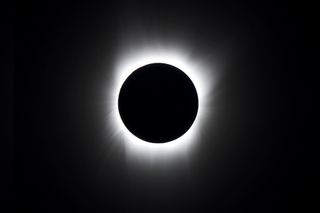
NASA is sponsoring several projects that will be looking at the corona. These include:
- Citizen Science Approach to Measuring the Polarization of the Solar Corona (led by Padma Yanamandra-Fisher, a senior research scientist at the Space Science Institute in Rancho Cucamonga, California). This effort will map electron distribution in the inner solar corona, which could help reveal why the corona is so much hotter than the solar surface. This is done in association with a citizen science project called Citizen CATE (which is discussed later in this slideshow).
- Studying the Corona in Infrared and Visible Wavelengths (led by Philip Judge, a senior scientist at the High Altitude Observatory in Boulder, Colorado). This project will image the corona in visible and near-infrared wavelengths, which is expected to give better insights into space weather.
- Measuring the Infrared Solar Corona (led by Paul Bryans, a project scientist at the National Corporation for Atmospheric Research). This will study infrared light from the corona from the first time. The goal is to better understand the sun's magnetic field.
- Exploring the Physics of the Coronal Plasma through Imaging Spectroscopy (led by Shadia Habbal, a solar physicist at the University of Hawaii’s Institute for Astronomy in Honolulu). This project will image the corona in several different wavelengths, to better understand the corona's temperature, composition and particle speeds.
- Testing a Polarization Sensor for Measuring Temperature and Flow Speed in the Solar Corona (led by Nat Gopalswamy, a staff scientist at NASA's Goddard Space Flight Center in Maryland). This team will look at the corona using a new polarization camera, which features thousands of tiny polarization filters instead of the typical design that puts one polarizer filter through three angles for each wavelength. If the camera works successfully, this could be an improvement for future corona observations.
From Earth: Effects on Earth's atmosphere
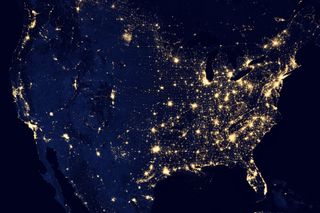
NASA will look at how Earth's atmosphere changes when the sun's radiation dips during the eclipse. This will be done with projects across the United States, including:
- Solar Eclipse-Induced Changes in the Ionosphere Over the Continental US (led by Phil Erickson, assistant director of the Massachusetts Institute of Technology's Haystack Observatory in Westford, Massachusetts). Disturbances in the ionosphere — a large layer that lies between about 45 miles and 620 miles (75 to 1,000 kilometers) above Earth — can be triggered when eclipses create atmospheric gravity waves (which are different than gravitational waves created in space by the acceleration of massive cosmic objects.) This team will use 6,000 ground sensors and data from NASA's Thermosphere Ionosphere Mesosphere Energetics and Dynamics satellite mission.
- Land and Atmospheric Responses to the 2017 Total Solar Eclipse (co-led by Bohumil Svoma and Jeffrey Wood from the University of Missouri in Columbia). This team will use ground instruments and weather balloons to see how the lower atmosphere and the land below responds to the solar eclipse. Plants and the weather may respond differently than during a normal sunset, since the sun's light will disappear three times faster, scientists said.
- Quantifying the Contributions of Ionization Sources on the Ionosphere (led by Bob Marshall, a remote sensing specialist at the University of Colorado Boulder). This project will monitor radio- wave transmissions to see how radiation in the ionosphere is affected during an eclipse.
- Studying Earth’s Atmosphere During an Eclipse from Above and Below (led by Guoyong Wen, an Earth scientist at NASA's Goddard Space Flight Center in Maryland). This project will look at how the solar eclipse affects radiation hitting the Earth's atmosphere and surface. Team members will use two instruments — a spectrometer (which shows how much light is available in a particular wavelength) and a pyranometer (which measures how much solar irradiance comes toward the surface). This will be linked with data from missions in space.
- Empirically Guided Solar Eclipse Modeling of the Earth’s Ionosphere (led by Greg Earle, a space science instrumentation researcher at Virginia Tech in Blacksburg). The goal is to learn how the ionosphere changes with the available sunlight, using radio transmitters and receivers across the United States.
From balloons
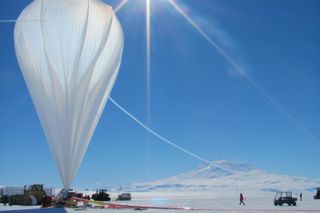
A balloon is much cheaper than a spacecraft and can still fly above most of Earth's obscuring atmosphere. During the eclipse, several balloon experiments will look at the sun and the moon's shadow on Earth. NASA Space Grant is also supporting an eclipse ballooning project, in which students in more than 50 locations will launch high-altitude balloon flights between Oregon and South Carolina.
From airplanes

NASA will send two WB-57F research jets 50,000 feet (15,000 meters) into the sky on Aug. 21, catching a glimpse of the sun's outer atmosphere through twin telescopes on the noses of these spacecraft. The project will also take the first-ever thermal images of Mercury, mapping temperature changes on the planet's surface. The telescopes on the jets will be able to see the eclipse for 3.5 minutes, longer than anyone on the ground. The project is led by Amir Caspi, an astrophysicist at the Southwest Research Institute in Colorado.
From space
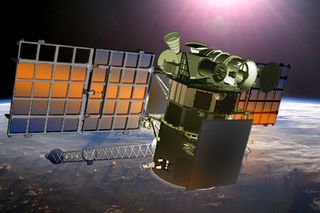
NASA has a fleet of Earth-observing spacecraft that monitor climate change and help with disaster relief, among other tasks. Many of them will be temporarily repurposed for eclipse observations on Aug. 21. NASA's Terra and Aqua satellites, and the NASA camera aboard the National Oceanic and Atmospheric Administration's (NOAA) Deep Space Climate Observatory will look at Earth during the total solar eclipse, mapping everything from temperature changes to alterations in the local weather. The eclipse shadow will be captured by the NASA/NOAA Suomi National Polar-orbiting Partnership and GOES-16 satellites.
There are also a number of spacecraft that study the sun, mainly to monitor solar weather and how it affects the Earth. Here's what each of them will be doing during the eclipse:
- Japan Aerospace Exploration Agency (JAXA)/NASA Hinode: Looking at the corona and X-ray jets from the sun's surface.
- NASA's Solar Dynamics Observatory (SDO): Watching the corona.
- NASA's Interface Region Imaging Spectrograph (IRIS): This spacecraft will see several moon transits in front of the sun. Its specialty will be looking at the lower atmosphere of the sun (the chromosphere) as well as imaging the entire limb of the sun.
- European Space Agency (ESA)/NASA Solar and Heliospheric Observatory (SOHO): This spacecraft will see just the corona during the eclipse. SOHO can create artificial eclipses using an instrument called a coronagraph.
- NASA's Solar Terrestrial Relations Observatory (STEREO): The single STEREO spacecraft in communication (the mission originally had two) will be on the far side of the sun and will see only the corona, but from a very different perspective.
From space, part 2: The moon
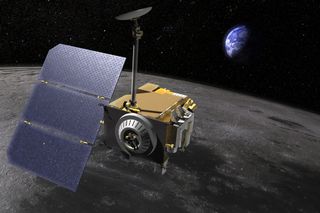
NASA's Lunar Reconnaissance Orbiter (LRO) has long provided high-resolution imagery of the moon, which has allowed scientists to map the moon's shadow on Earth in unprecedented detail. We can now predict where totality will fall, based not only on where the moon is going, but the shape of its disk (which is affected by mountains and valleys). During the eclipse, LRO will image the moon's shadow on Earth.
From space, part 3: Astronaut views

Astronauts on the International Space Station will be lucky enough to see the eclipse three times, and will observe it safely using special glasses and camera filters already on the station. They will observe totality twice (the second time over the continental United States), and, on the third run, they'll see a partial eclipse that covers 85 percent of the sun.
From the public: GLOBE Observer
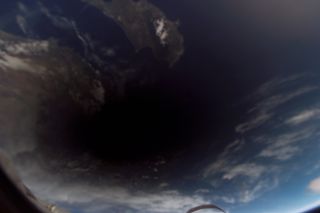
Wherever you're standing in the path of totality, you're bound to see some changes in the clouds, the air temperature and on the surface. The aim of this project is for individual people (even non-scientists) to gather observations and then submit them to a database that researchers will use to learn more about the atmosphere's changes during an eclipse. You can read more about how to get involved here: https://www.globe.gov/web/eclipse/overview
From the public: HamSCI (Virginia Tech/New Jersey Institute of Technology)
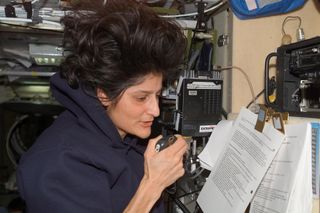
Amateur radio operators across the country will unite to study the ionosphere and how it changes when an eclipse is in progress. The ionosphere affects the propagation of radio waves, particularly at very low frequencies. You can read more about how to get involved here: http://www.hamsci.org/basic-project/2017-total-solar-eclipse
Join our Space Forums to keep talking space on the latest missions, night sky and more! And if you have a news tip, correction or comment, let us know at: community@space.com.
Get the Space.com Newsletter
Breaking space news, the latest updates on rocket launches, skywatching events and more!

Elizabeth Howell (she/her), Ph.D., is a staff writer in the spaceflight channel since 2022 covering diversity, education and gaming as well. She was contributing writer for Space.com for 10 years before joining full-time. Elizabeth's reporting includes multiple exclusives with the White House and Office of the Vice-President of the United States, an exclusive conversation with aspiring space tourist (and NSYNC bassist) Lance Bass, speaking several times with the International Space Station, witnessing five human spaceflight launches on two continents, flying parabolic, working inside a spacesuit, and participating in a simulated Mars mission. Her latest book, "Why Am I Taller?", is co-written with astronaut Dave Williams. Elizabeth holds a Ph.D. and M.Sc. in Space Studies from the University of North Dakota, a Bachelor of Journalism from Canada's Carleton University and a Bachelor of History from Canada's Athabasca University. Elizabeth is also a post-secondary instructor in communications and science at several institutions since 2015; her experience includes developing and teaching an astronomy course at Canada's Algonquin College (with Indigenous content as well) to more than 1,000 students since 2020. Elizabeth first got interested in space after watching the movie Apollo 13 in 1996, and still wants to be an astronaut someday. Mastodon: https://qoto.org/@howellspace
